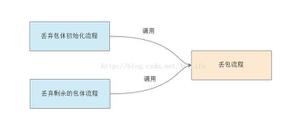Python实现的简单线性回归算法实例分析
本文实例讲述了Python实现的简单线性回归算法。分享给大家供大家参考,具体如下:
用python实现R的线性模型(lm)中一元线性回归的简单方法,使用R的women示例数据,R的运行结果:
> summary(fit)
Call:
lm(formula = weight ~ height, data = women)
Residuals:
Min 1Q Median 3Q Max
-1.7333 -1.1333 -0.3833 0.7417 3.1167
Coefficients:
Estimate Std. Error t value Pr(>|t|)
(Intercept) -87.51667 5.93694 -14.74 1.71e-09 ***
height 3.45000 0.09114 37.85 1.09e-14 ***
---
Signif. codes: 0 ‘***' 0.001 ‘**' 0.01 ‘*' 0.05 ‘.' 0.1 ‘ ' 1
Residual standard error: 1.525 on 13 degrees of freedom
Multiple R-squared: 0.991, Adjusted R-squared: 0.9903
F-statistic: 1433 on 1 and 13 DF, p-value: 1.091e-14
python实现的功能包括:
- 计算pearson相关系数
- 使用最小二乘法计算回归系数
- 计算拟合优度判定系数R2R2
- 计算估计标准误差Se
- 计算显著性检验的F和P值
import numpy as np
import scipy.stats as ss
class Lm:
"""简单一元线性模型,计算回归系数、拟合优度的判定系数和
估计标准误差,显著性水平"""
def __init__(self, data_source, separator):
self.beta = np.matrix(np.zeros(2))
self.yhat = np.matrix(np.zeros(2))
self.r2 = 0.0
self.se = 0.0
self.f = 0.0
self.msr = 0.0
self.mse = 0.0
self.p = 0.0
data_mat = np.genfromtxt(data_source, delimiter=separator)
self.xarr = data_mat[:, :-1]
self.yarr = data_mat[:, -1]
self.ybar = np.mean(self.yarr)
self.dfd = len(self.yarr) - 2 # 自由度n-2
return
# 计算协方差
@staticmethod
def cov_custom(x, y):
result = sum((x - np.mean(x)) * (y - np.mean(y))) / (len(x) - 1)
return result
# 计算相关系数
@staticmethod
def corr_custom(x, y):
return Lm.cov_custom(x, y) / (np.std(x, ddof=1) * np.std(y, ddof=1))
# 计算回归系数
def simple_regression(self):
xmat = np.mat(self.xarr)
ymat = np.mat(self.yarr).T
xtx = xmat.T * xmat
if np.linalg.det(xtx) == 0.0:
print('Can not resolve the problem')
return
self.beta = np.linalg.solve(xtx, xmat.T * ymat) # xtx.I * (xmat.T * ymat)
self.yhat = (xmat * self.beta).flatten().A[0]
return
# 计算拟合优度的判定系数R方,即相关系数corr的平方
def r_square(self):
y = np.mat(self.yarr)
ybar = np.mean(y)
self.r2 = np.sum((self.yhat - ybar) ** 2) / np.sum((y.A - ybar) ** 2)
return
# 计算估计标准误差
def estimate_deviation(self):
y = np.array(self.yarr)
self.se = np.sqrt(np.sum((y - self.yhat) ** 2) / self.dfd)
return
# 显著性检验F
def sig_test(self):
ybar = np.mean(self.yarr)
self.msr = np.sum((self.yhat - ybar) ** 2)
self.mse = np.sum((self.yarr - self.yhat) ** 2) / self.dfd
self.f = self.msr / self.mse
self.p = ss.f.sf(self.f, 1, self.dfd)
return
def summary(self):
self.simple_regression()
corr_coe = Lm.corr_custom(self.xarr[:, -1], self.yarr)
self.r_square()
self.estimate_deviation()
self.sig_test()
print('The Pearson\'s correlation coefficient: %.3f' % corr_coe)
print('The Regression Coefficient: %s' % self.beta.flatten().A[0])
print('R square: %.3f' % self.r2)
print('The standard error of estimate: %.3f' % self.se)
print('F-statistic: %d on %s and %s DF, p-value: %.3e' % (self.f, 1, self.dfd, self.p))
python执行结果:
The Regression Coefficient: [-87.51666667 3.45 ]
R square: 0.991
The standard error of estimate: 1.525
F-statistic: 1433 on 1 and 13 DF, p-value: 1.091e-14
其中求回归系数时用矩阵转置求逆再用numpy内置的解线性方程组的方法是最快的:
a = np.mat(women.xarr); b = np.mat(women.yarr).T
timeit (a.I * b)
99.9 µs ± 941 ns per loop (mean ± std. dev. of 7 runs, 10000 loops each)
timeit ata.I * (a.T*b)
64.9 µs ± 717 ns per loop (mean ± std. dev. of 7 runs, 10000 loops each)
timeit np.linalg.solve(ata, a.T*b)
15.1 µs ± 126 ns per loop (mean ± std. dev. of 7 runs, 100000 loops each)
更多关于Python相关内容感兴趣的读者可查看本站专题:《Python数学运算技巧总结》、《Python数据结构与算法教程》、《Python函数使用技巧总结》、《Python字符串操作技巧汇总》及《Python入门与进阶经典教程》
希望本文所述对大家Python程序设计有所帮助。
以上是 Python实现的简单线性回归算法实例分析 的全部内容, 来源链接: utcz.com/z/355358.html









